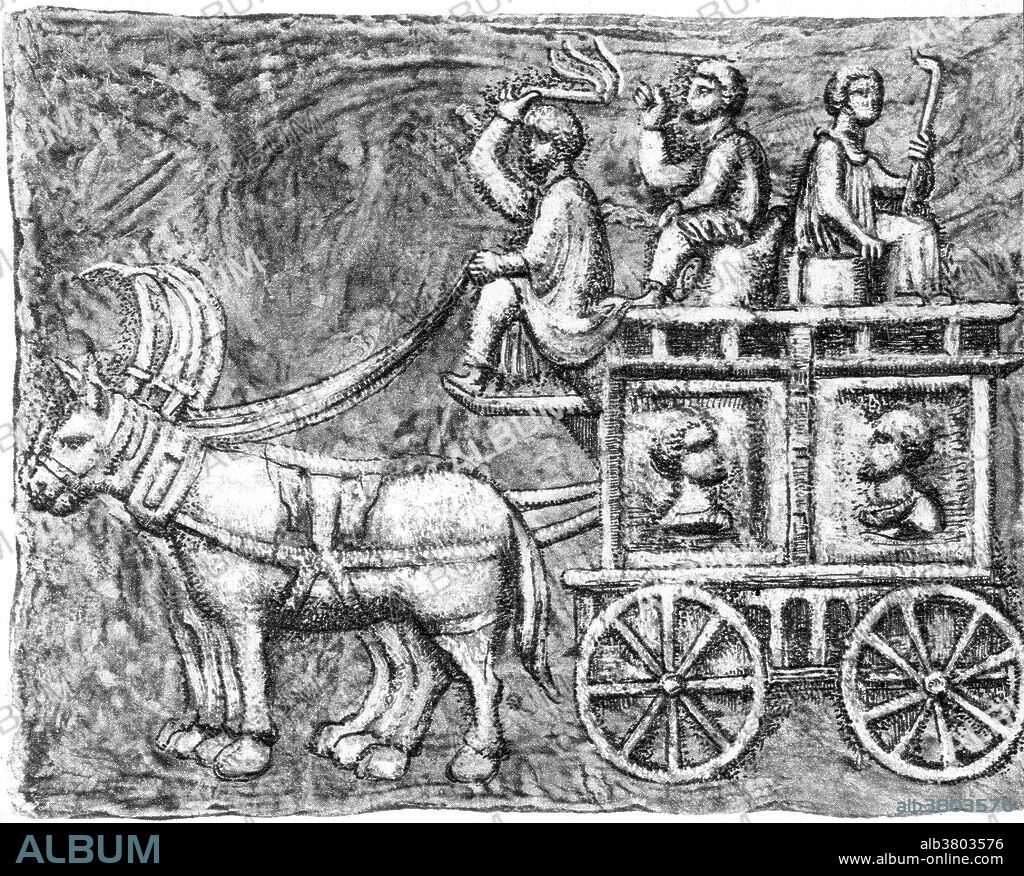alb3803576
Roman Four-Wheeled Traveling Wagon

|
Añadir a otro lightbox |
|
Añadir a otro lightbox |



¿Ya tienes cuenta? Iniciar sesión
¿No tienes cuenta? Regístrate
Compra esta imagen

Título:
Roman Four-Wheeled Traveling Wagon
Descripción:
Ver traducción automática
Captioned: "Roman Four-wheeled funeral car or traveling wagon." Throughout their empire the Romans used a number of vehicles to travel. The carrus (car) was an open chariot which carried a driver and a passenger and was drawn by two horses. The carpentium was a more luxurious version and was covered by an arched cloth. It was drawn by mules and was used by women and officials. The cisium was a cab with two seats. It was open at the top and front and was drawn by two horses or mules. Coaches (raeda) were wagons with four wheels with box-like high sides and seats along them and were drawn by a team of oxen, horses or mules. It carried several people and luggage. The invention of the wheel falls in the late Neolithic, and may be seen in conjunction with other technological advances that gave rise to the early Bronze Age. The question of which culture originally invented the wheeled vehicle is still unsolved. Early wheels were simple wooden disks with a hole for the axle. The invention of the wheel has also been important for technology in general, important applications including the water wheel, the cogwheel, the spinning wheel, and the astrolabe.
Crédito:
Album / NYPL/Science Source
Autorizaciones:
Modelo: No - Propiedad: No
¿Preguntas relacionadas con los derechos?
¿Preguntas relacionadas con los derechos?
Tamaño imagen:
4200 x 3375 px | 40.6 MB
Tamaño impresión:
35.6 x 28.6 cm | 14.0 x 11.2 in (300 dpi)
Palabras clave:
ANTIGUO • ANTIGÜEDAD • ARTE • BLANCO Y NEGRO • CARRO • CIENCIA • CIVILIZACION ANTIGUA • CULTURA ANTIGUA • DIBUJO • FAMOSO • HISTORIA • HISTORICO • ILUSTRACION • IMPERIO ROMANO • IMPORTANTE • INVENCION • OBRA DE ARTE • ROMANO • RUEDA • TECNOLOGÍA • TECNOLÓGICA • TRANSPORTE
 Pinterest
Pinterest Twitter
Twitter Facebook
Facebook Copiar enlace
Copiar enlace Email
Email
